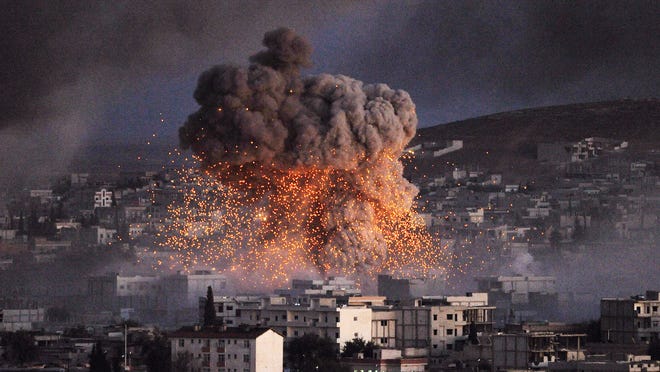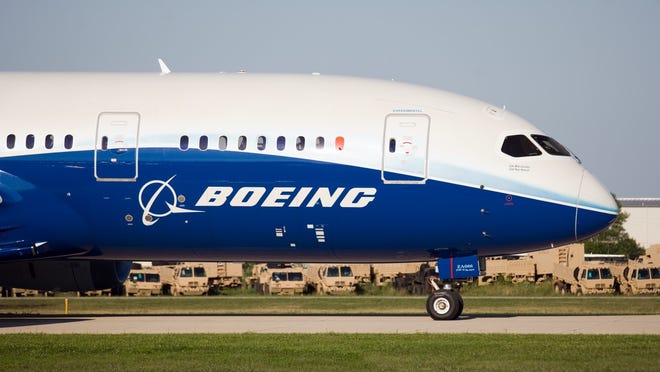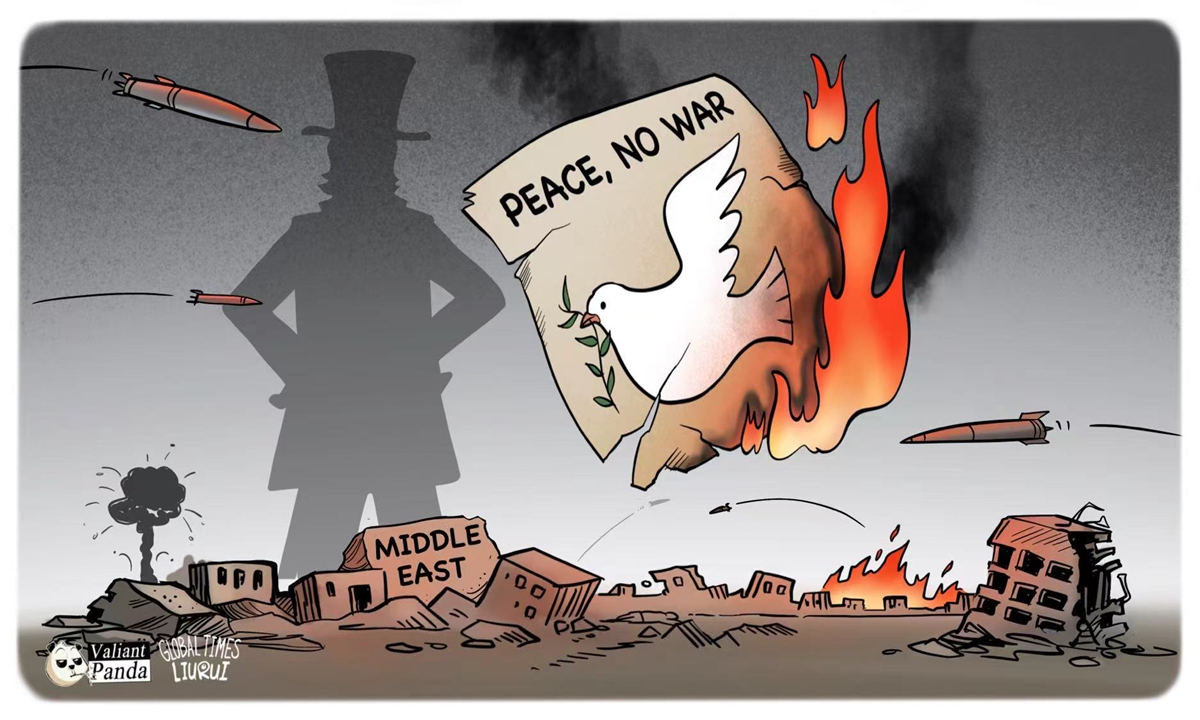
(Pictured: Corporate mercenaries in Afghanistan)
By James Richard Marra
During my career as a business analyst, I learned much about why and how some businesses succeed while others fail. Failure may result from higher wage levels, employee health insurance costs, or market conditions. Nevertheless, it generally occurs due to poor management: owner incompetence, arrogance, and greed, insensitivity to fundamental business factors and best practices, or a flawed understanding of their markets and competitors.
I bring this up because the neofascist governance in Washington and its corporate partners are wooing Americans toward another imperial catastrophe in the Middle East, this time involving Iran. For these capitalists, much is never enough. So as expected, the military-technology-surveillance complex (MTSC) wishes to expand its profitable productive capacity into new or under-exploited war-commodity markets. The success of this expansion depends upon careful attention to geographic, material, and operational considerations. Best business practices demand that the MTSC develops a sound plan by first consulting experts in these areas. These factors might include those identified by the famous military theorist Carl von Clausewitz. For von Clausewitz, the three pillars of warfare are strategy, operations, and tactics. Within the MTSC’s production and marketing plans, these required military functions are transformed into profitable exchange values - money. If this program is managed well, the sky is the limit. If not, failure will likely come.
With these thoughts in mind, we might consider the case of Erik Prince, the ex-Navy Seal and founder/CEO of the failed and criminally mercenary service provider Blackwater. In 2018, Prince, the brother of Education Secretary, and public-education privatizer, Betsy DeVos, approached the Trump Administration with a proposal to privatize the Afghan War. Prince’s dog-and-pony show claimed that the war could be waged more economically and efficiently, while deploying fewer troops in smaller specialized units.
Neofascists, like Steve Bannon, invited further discussion and exploration. This is not surprising because fascism of any sort, including today's neofascism, is an artful alliance of an anti-conventional and zealous "Leader," a hyper-nationalistic culture, and an exceptionally exploitative form of capitalism. Trump's fascism gets its "neo" in part from the fact that today's capitalism is largely unfettered, "neoliberal," finance-and-service-dominated, and monopolized. This current form differs from the manufacturing capitalism that dominated the world economy from the 1920s to the 1980s. Furthermore, history reminds us that, while Hitler disliked “industrialists,” he admired Henry Ford to the extent that, in 1938, he bestowed upon him the Grand Cross of the German Eagle.
Now, capitalism opposes worker control over their labor power. The military command structure epitomizes this, as unions are banned and the demands made upon military labor (soldiers) go unquestioned. Likewise, fascist governance requires that workers absolutely obey the will of the political Leader, as it is transformed into the productive operations in which workers participate.
Both Prince and Bannon recognized a profitable business opportunity enabled by the structural efficiencies fascism offers within a privatized war market. In this model, military needs are continually identified and marketed by the Leader and the MTSC through their political minions and the capitalist media. Once workers are indoctrinated to the benefits of war, the MTSC transforms those needs into corresponding commodities. Vast amounts of capital are provided by taxes largely levied upon the working class. Politically trumped up fears of the working class not only provide a market incentive, but also mobilize workers’ labor power, both on and off the battlefield.
Trump’s military and other members of the MTSC balked at Prince’s scheme. Generals Mattis, Kelly, and McMaster ensured that Prince’s folly was a non-starter. Given this, a question arises: How could a neofascist mercenary's neofascist proposal to a neofascist Leader fail? Prince is neither an idiot nor a novice. His operational capabilities have been successfully field-tested, are marshaled by a highly skilled cadre of special-forces experts, and bolstered by significant international technical and political support.
It occurs to me that Prince’s business failure significantly resides in his misunderstanding of the contemporary war market and its players. He doesn’t understand his competitors’ collective business model, its functional role within the neofascist governance, or its monopolistic structure. Prince’s arrogance leads him to believe he can slither his way directly to the top of the neofascist food chain, biting off a prime piece of the war market without complaint from the big players. That might work if the market were immature, and competition largely relevant to profitability. But today’s market is both mature and well organized. Leading participants synergistically avoid price wars, fight unions and organizing efforts, fund think tanks and lobbyists, contribute to the campaign coffers of servile politicians, and meet together at national and global conferences to determine market rules.
Dominant corporations viscously defend themselves from the competitive risks presented by new and less mature companies. Thus, corporations join in a “co-respective” market behavior that largely guarantees their continuing control and profitability.
Alex Hollings asks:
So why didn’t Trump...a business man that values bottom-line savings, sign off on it?...Steve Bannon, Trump’s recently fired chief strategist, was said to support Prince’s plan, but the Generals Mattis, Kelly, and McMaster have all dismissed it. For those in Bannon’s corner, they argue it’s because he’s the outsider, free from the political pressures of the military industrial complex.
A congressional aide attending the meeting reported, “The adults hate it.”
There is another potential problem, although one that might offer a silver lining for Prince: the laws that govern American wars. These pesky laws make it more difficult for any privatized war business to control production, supply, and operational management. For a privatized war commodity to be successful, businesses require that civilian leadership regularly deliver new war-needs, which would motivate market demand. While both Democrats and Republicans are quick to fund occasional “short” wars, that isn’t enough. What is needed is a government that will go to war as unhesitatingly and continually, as Hitler did devouring the nations of Europe. A fascist leadership is ideal because it considers war to be among the noblest of human endeavors, and resists conventional or legal restraints imposed by “decadent” liberal democracies.
However, today’s renewed calls for limits upon the now imperial presidency from the American left illustrate the business risk represented by not appreciating the vicissitudes involved in political strategy. Prince’s short-term thinking led him to largely ignore the fact that presidents come and go. Public opinion changes with the lifting of a TV remote, and politicians the chase political winds like a bloodhound after a jackrabbit through a lush Kentucky meadow. Prince failed to appreciate that his business success hinged on controlling the dance card at a capitalist senior prom to which he is not invited.
My references to “neofascism” may annoy some folks: "You’re calling Trump a neofascist just because you don’t like his politics!” Although I find Trump's politics uniquely vile, that fact doesn’t inform my understanding of a “Futurist”-inspired fascism. To understand Futurism, let's allow it to speak for itself.
Futurists wish to
...sing the love of danger, the habit of energy and boldness.
...extol aggressive movement, feverish insomnia, the double-quick step, the somersault, the box on the ear, the fisticuff.
...to destroy the museum, the libraries, to fight against moralism, feminism and all opportunistic and utilitarian malignancy.
...glorify war - the only health-give [sic] of the world - militarism, patriotism, the destructive arm of the Anarchist, the beautiful ideas that kill, and contempt for woman.
These pleasantries might well have come from Donald Trump or one of his torch-bearing neo-Nazi devotees. But, they are offered by the founder of the Futurist movement, Filippo Tommaso Marinetti, in Futurist Aristocracy (1923), edited by the Italian Futurist Nanni Leone Castelli. As such, they illuminate a frightening Futurist thread between contemporary Trumpian neofascism and its historical roots. Benito Mussolini was a Futurist of sorts, and was seen by many contemporaries, Italian or otherwise, as the epitome of the aggressive and spontaneous Futurist hero. Here are a few priceless insights from Benito Mussolini’s (with Giovanni Gentile) 1932 article “Doctrine of Fascism.”
[Fascism]...repudiates the doctrine of Pacifism....[W]ar alone brings up to their highest tension all human energies and puts the stamp of nobility upon the peoples who have the courage to meet it.
For Fascism the tendency to Empire, that is to say, to the expansion of nations, is a manifestation of vitality...
Fascism attacks the whole complex of democratic ideologies and rejects them both in their theoretical premises and in their applications or practical manifestations. [F]ascism denies that the majority, through the mere fact of being a majority, van [sic] rule human societies; it denies that this majority can govern by means of a periodical consultation; it affirms the irremediable, fruitful and beneficent inequality of men, who cannot be leveled by such a mechanical and extrinsic fact as universal suffrage.
Against individualism, the Fascist conception is for the State; and it is for the individual in so far as he coincides with the State, which is the conscience and universal will of man in his historical existence.
Fascism, in short, is not only the giver of laws and the founder of institutions, but the educator and promoter of spiritual life. It wants to remake, not the forms of human life, but its content, man, character, faith. And to this end it requires discipline and authority that can enter into the spirits of men and there govern unopposed.
These happy thoughts tighten the historical thread that connects Mussolini’s historical fascism to Trump’s regime, as transmitted through pseudo-intellectuals like Steve Bannon and Sebastian Gorka. This fascist mentality now commands the most powerful military force in human history. Trump’s behavior in both deed and word is a litany of fascist, and therewith Futurist, virtues.
Possessing the legal and political prerequisites for endless warfare, war enterprises need capital to fuel ongoing accumulation. War profiteers understand that citizens purchase war commodities in the sense that they accede to the Constitutional requirement that they pay war costs through taxation. In the current war market, temporary wars no longer provide the required market potential or capital. Fighting temporary wars no longer makes market sense. Instead, the working class must purchase a product that is always urgently needed, requiring continuing maintenance, like the family car. To ensure the needed profitability, war is sold as an indispensable civic need, based upon a continually present danger. That danger comes conveniently from “terrorists,” a term whose meaning is so muddled that it can apply to anyone, anywhere, anytime, anyhow.
With the proper social and political indoctrination, and product marketing, citizens happily surrender their Constitutional right to decide against whom, where, when, and how they sacrifice themselves to the god of imperial war. They are invited by a monopoly of war service providers to choose between column A or column A. Americans now enjoy a neofascist Leader in the White House, and a semi-fascist congress willing to pass mushrooming military budgets. If there were a Constitutional challenge to this state of affairs, the matter would be decided by a Supreme Court infested with neoliberal sycophants. Thus, endless war, as always under capitalism, becomes a good business investment, and therefore good governance.
Under Trump's neofascism, the Leader commands the “supply side” of the war market. Taxes on war businesses are deeply cut, while those enterprises become decreasingly deregulated and increasingly empowered. Under contemporary capitalism, the distinction between the sales effort, which invents new needs, and commodity production is largely dissolved. With the rise of a privatized war market, the traditional relationship between democratic governance and the “invisible” divine hand that supposedly guides markets is, to echo Mussolini, "repudiated." The MTSC is now fully absorbed within the structural operations of the governance, and vice versa. The business role of the Leader is to manage a permanent war-marketing project that inspires the continuing development of new war commodities. Thus, the US Defense Department is “deconstructed” (to use one of Bannon’s favorite words), only to emerge refreshed as the Fannie Mae of American global capitalist dominance.
In sum, Prince’s business proposal was ill conceived, misinformed, and poorly timed. It suffered from management problems that most failed businesses experience. While Prince, like Trump, may have obtained some measure of business success by bullying the defenseless and lying about much, both have left an ultimate legacy of business failure and bankruptcy. Unfortunately, Trump was provided a place at the head of the capitalist table by a rapacious Republican Party and its white nationalist supporters. It will remain to be seen if Prince learns some lessons and abandons his unprofitable arrogance in favor of sound business judgment. For the sake of the American working class, I hope that won’t happen.












 Destroying peace. Illustration: Liu Rui/GT
Destroying peace. Illustration: Liu Rui/GT